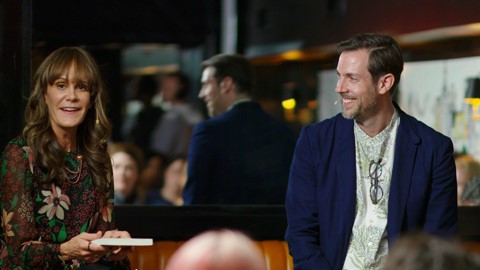
Fashion Positive was launched last November as a response of more fashion designers and industry professionals seeking new ways to make fashion sustainable. It was an initiated and created by Cradle to Cradle Products Institution to figure out regenerative systems in the supply chain and design.
Last week, they announced their first salon series in New York City—informal gatherings for the fashion industry players to discuss latest ways for turning the tide of fashion.
In this story, we talk about the highlights of a conversation with Julie Gilhart, who is on the board of Fashion Positive, and Lewis Perkins from Cradle to Cradle Products Institution.
First, both Julie and Lewis said that the conversation of fashion and sustainability often stems around the concept of doing less, scale to zero, but the reality is that this may be the wrong way to look at things. Production and growth are OK, and what the Cradle to Cradle system is trying to achieve is a system of “positives.”
This means looking at material health, what’s in the product and material re-utilization. More clearly, this means making products with renewable energy, clean water, making products with social fairness practices.
Fashion positive is not just about the finished product, but about looking at the materials used by designers within this regenerative nature.

When it comes to dyes in fashion, the majority of it goes into rivers and water systems. Cradle to Cradle Innovation Institute through Fashion Positive has a guide of steps that a manufacturing facility can utilize. It looks at this like a plant that gives back to the grid, cleaner water than when it started, higher wages for the workers, and products that are used, but ensured that once the use of the product is done in one form is over, there will be continued use of the product in another way.
Interestingly, Lewis mentioned his Rag and Bone jacket as an example in the salon discussion. He asked, did Rag and Bone when making the jacket consider the design so that it could be upcycled or biodegradable? The bigger the businesses, the harder it is to re-do their systems, so the real opportunity, according to Lewis, was with the smaller, up-and-coming designers.
According to Julie, who expanded on this idea, it’s important to create the space in your mind of how the future will be for your brand. Don’t think if you are small you can’t make a difference.
The other interesting point that both of them made was how luxury can make an impact. Luxury has the potential to discover new methods and invest in fabrics that drive the price down. Their innovation can be shared, and create new life, i.e. new yarns that can be used for H&M, Target, or Wal-Mart.
Fashion Positive has a simple way to do this. There are different levels that a brand can achieve from Basic to Platinum. With Fashion Positive, brands and suppliers that are doing the most progressive work share their success, even their yarns. There is a yarn library at Fashion Positive. This collection is given out, or loaned, to help others add to the innovation, whether it be through new yarns or supply chain systems, or new chemicals to achieve sustainable dyes, progressive ideas of water filtration systems, or new ways of utilizing renewable energy.
Brands such as Stella McCartney (which both Lewis and Julie consult with), Under the Canopy’s Portico’s brands, and Bionic Yarn (Pharrell Williams) all have yarns that are put into this library, which is growing.
Don’t forget to also watch Live Earth, Road to Paris on June 18th! Here’s more.
Stay tuned for more from Fashion Positive’s salon series part 2. For more information about youth culture, sustainability, and fashion, check-out our Sustainability and the State of Youth Culture Report 2014. Our next Report will be posted in July 2015.


